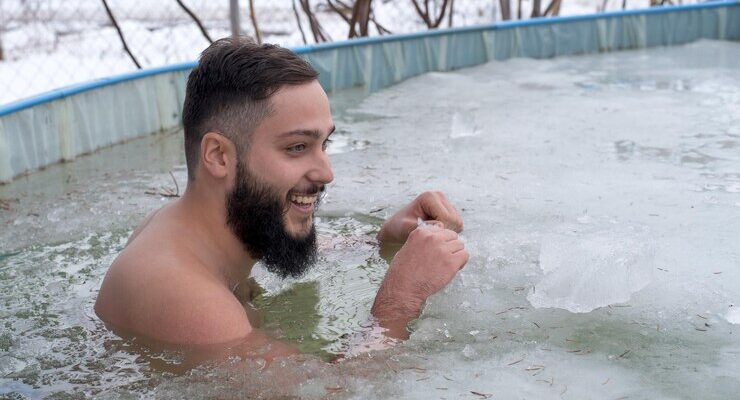In the realm of sports and fitness, recovery is as crucial as training itself. Among various recovery techniques, ice baths have gained considerable attention for their effectiveness in alleviating muscle soreness and enhancing recovery.
This article explores the science behind ice bath for recovery, their benefits, and how they can play a vital role in optimizing recovery after intense workouts.
What is an Ice Bath?
An ice bath, also known as cold water immersion, involves submerging the body in cold water, typically at temperatures ranging from 50°F to 59°F (10°C to 15°C), for a brief period. Athletes and fitness enthusiasts often utilize this method to expedite recovery after strenuous physical activity. The practice dates back to ancient times but has gained popularity in modern sports science due to its proven benefits.
How Ice Baths Work
When the body is exposed to cold water, several physiological responses occur. The initial shock of the cold causes blood vessels to constrict, reducing blood flow to the muscles. This vasoconstriction helps minimize inflammation and swelling, which are common after intense exercise. Once the body warms back up, blood vessels dilate, promoting increased circulation and oxygen delivery to the muscles, facilitating the recovery process.
Key Benefits of Ice Baths for Recovery
1. Reduced Muscle Soreness
One of the primary reasons athletes use ice baths is to alleviate delayed onset muscle soreness (DOMS). After vigorous exercise, muscles can become inflamed and sore. The cold exposure from ice baths helps reduce this inflammation, providing relief and allowing athletes to recover more quickly.
2. Decreased Inflammation
Ice baths are particularly effective in managing inflammation. When muscles are subjected to intense workouts, microscopic tears occur, leading to inflammation. Cold water immersion helps mitigate this response, reducing swelling and promoting faster healing of the affected tissues.
3. Enhanced Recovery Time
By incorporating ice baths into their recovery routine, athletes often experience shorter recovery times. The combination of reduced soreness and inflammation allows for quicker return to training and competition, ultimately improving overall performance.
4. Improved Circulation
The cycle of vasoconstriction and vasodilation during ice baths promotes better circulation. When blood vessels constrict in cold water, they restrict blood flow; once out of the cold, the body warms up, leading to a surge of blood flow back to the muscles. This process helps flush out metabolic waste products that accumulate during exercise, further aiding in recovery.
5. Mental Resilience
Beyond the physical benefits, ice baths also contribute to mental toughness. The practice of enduring cold exposure can enhance an athlete’s mental resilience, helping them push through discomfort and develop a stronger mindset. This mental aspect can be just as important as physical recovery in sports.
Best Practices for Ice Bath Therapy
1. Duration and Temperature
For beginners, starting with a duration of 5 to 10 minutes is recommended. As you become more accustomed to the cold, you can gradually increase the time spent in the ice bath. The water temperature should ideally be between 50°F and 59°F (10°C to 15°C) to maximize the benefits without risking hypothermia.
2. Preparation
Before entering an ice bath, prepare your body by warming up with light exercise. This can help ease the transition into cold water. Additionally, having a warm towel or blanket nearby for after the bath can help you warm up quickly once you exit.
3. Focus on Breathing
During the initial moments in the ice bath, focus on maintaining controlled breathing. Deep, steady breaths can help calm the body and mind, making the experience more manageable.
4. Listen to Your Body
Pay attention to how your body reacts during the ice bath. If you experience excessive discomfort or pain, it’s essential to exit the water immediately. Everyone has different tolerance levels, so it’s crucial to listen to your body.
Safety Considerations
While ice baths offer numerous benefits, it’s important to use them safely:
1. Consult a Professional
If you have any pre-existing medical conditions, especially cardiovascular issues, consult with a healthcare professional before beginning ice bath therapy.
2. Limit Time in Cold Water
To prevent hypothermia, limit your time in the ice bath. Start with shorter durations and gradually increase as you become more accustomed to the cold.
3. Stay Hydrated
Ensure you are well-hydrated before and after your ice bath session. Cold exposure can lead to dehydration, so drinking water is vital.
Conclusion
Ice baths are a powerful recovery tool that can significantly enhance athletic performance and overall well-being. By reducing muscle soreness, inflammation, and recovery time, cold water immersion is an effective method for athletes and fitness enthusiasts alike. For those looking to explore ice bath therapy in a supportive environment, Prime Recovery offers tailored recovery solutions designed to optimize your wellness journey.
Embrace the benefits of ice baths and elevate your recovery routine today!
